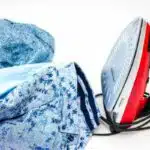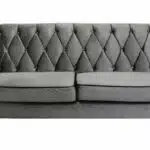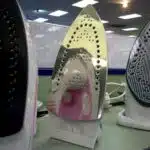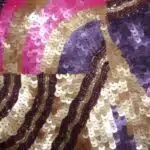Velvet has been a sought-after fabric for centuries due to its luxurious feel and elegant appearance. However, cleaning and ironing velvet clothes can be a daunting task for many people. Velvet is a delicate fabric that requires special care to maintain its texture and shape. In this article, we will explore the best practices for cleaning and ironing velvet clothes, so that you can keep your favorite velvet garments looking as good as new.
As a textile care expert, it is crucial to understand the intricacies of different fabrics and their specific requirements in terms of maintenance. Velvet is no exception – it requires gentle handling, careful washing techniques, and precise ironing methods to ensure that it retains its softness and luster. Whether you are dealing with a velvet dress, jacket or blouse, our comprehensive guide will provide you with step-by-step instructions on how to properly clean and iron your velvet clothes without damaging them. By following these guidelines, you can enjoy the beauty of your velvet garments for years to come while serving others through your impeccable style.
Understanding The Characteristics Of Velvet
Velvet is a luxurious fabric that has been used for centuries to create elegant garments. It is known for its soft and plush texture, which is created by a process called pile weaving. During this process, loops of yarn are cut, creating a dense surface of raised fibers. Understanding velvet pile is crucial to properly caring for and maintaining this delicate fabric.
There are two main types of velvet fabric: woven and knitted. Woven velvet is made using a loom, where the yarns are woven together to create the base cloth. Knitted velvet, on the other hand, is made using a knitting machine that creates loops in the yarns, which are then cut to create the pile. Both types of velvet can be made from various materials such as silk, cotton, rayon or polyester.
It’s important to note that different types of velvet require different care methods due to their varying compositions and pile heights. While some velvets may be dry clean only, others can be washed at home with care. Assessing the type of velvet you have will help determine the best cleaning method to use without damaging your garment.
Assessing The Condition Of Your Velvet Clothes
Assessing velvet quality is essential before cleaning and ironing to ensure that the fabric remains in its best condition. Velvet is a delicate fabric with a unique texture that requires gentle care, and improper handling can cause damage to its surface. The first step in assessing velvet quality is to inspect the fabric for any visible signs of wear and tear. Look for any areas where the pile may have flattened or worn away, as these are indications of excessive use.
Identifying velvet fabric blends is also crucial because it determines the appropriate cleaning method. Some velvets are made from synthetic materials such as polyester, while others are made from natural fibers like silk or cotton. Synthetic fabrics can withstand more rigorous cleaning methods than natural fibers, which require gentler care. To identify a velvet blend, check the garment label or consult with a textile care expert.
Finally, consider the color and pattern of your velvet clothes when assessing their condition. If there are any noticeable discolorations or stains on the fabric, they may require special treatment during cleaning to prevent further damage. Additionally, patterns on velvet fabrics should be examined carefully to ensure that they remain intact after cleaning.
Additional List:
To assess your velvet clothes thoroughly, you should also consider:
- The age of the garment – Older velvets may be more delicate and require more careful handling.
- The presence of embellishments – Any beads or sequins attached to the fabric may affect how it should be cleaned.
- The intended use – If you plan on wearing your velvet clothes frequently, you may need to take extra measures to maintain their quality over time.
With this information in mind, you can properly assess your velvet clothes’ condition and determine the appropriate steps necessary for cleaning and ironing them effectively. In preparing your velvet clothes for cleaning, there are specific steps you can take to ensure their longevity and preserve their unique texture and appearance.
Preparing Your Velvet Clothes For Cleaning
After assessing the condition of your velvet clothes, it’s time to prepare them for cleaning. Just like a skilled chef prepares ingredients before cooking, preparing your velvet clothes will ensure that you get the best possible results from your cleaning efforts. Think of it as laying the foundation for a well-cooked meal.
Assessing texture is an important part of preparing your velvet clothes for cleaning. Velvet has a unique texture that requires special attention during cleaning and ironing. The pile on velvet can easily be flattened or damaged if not handled properly, so it’s important to choose the right detergent and method of cleaning.
Choosing detergents that are specifically formulated for delicate fabrics is crucial when it comes to preserving the texture of your velvet clothes. Harsh chemicals and detergents with bleach or enzymes can damage the fibers in your clothing, leaving them looking worn and faded. It’s also important to avoid using fabric softeners or dryer sheets which can leave residue and flatten the pile on velvet.
Next, we’ll discuss choosing the right cleaning method for your velvet clothes. By taking these steps to prepare your clothing, you’ll be able to keep your velvet looking plush and luxurious for years to come. As a textile care expert, I recommend investing time in this preparatory step as it can make all the difference in maintaining the quality of your garments. Remember, proper preparation leads to proper execution!
Choosing The Right Cleaning Method
When it comes to cleaning velvet clothes, choosing the right cleaning method is crucial to maintain their quality and texture. Dry cleaning is a popular option for velvet garments as it involves no water and minimizes the risk of damage. Dry cleaners use special solvents that dissolve dirt and grime without affecting the fabric’s integrity. However, it’s essential to choose a reputable dry cleaner who has experience working with delicate fabrics like velvet.
Another option for cleaning velvet clothes is steam cleaning. This method uses steam to remove dirt and stains from the fabric without using any harsh chemicals or solvents. Steam cleaning is an effective way to clean velvet, but it may not be suitable for all types of velvet fabrics. It’s important to consult with a textile care expert before attempting this method at home.
In summary, choosing the right cleaning method for your velvet clothes can make all the difference in maintaining their quality and prolonging their lifespan. Dry cleaning and steam cleaning are two viable options, but it’s important to consider which one is best suited for your specific garment. In the next section, we will explore how to hand wash your velvet clothes, another alternative that may be more appropriate for certain situations.
Hand Washing Your Velvet Clothes
Like a delicate flower, velvet clothing demands special attention and care to maintain its beauty. Proper cleaning and ironing are key factors in ensuring the longevity of your velvet garments. But with great care comes great responsibility, and it’s important to avoid common mistakes that could ruin your beloved velvet pieces. In this section, we will explore the benefits of velvet clothing and provide you with tips on how to clean and iron them correctly.
Velvet is a luxurious fabric that has been around for centuries. It’s soft, plush texture adds elegance and sophistication to any outfit. Velvet clothing is versatile and can be worn for both formal occasions or casual outings. Not only does it look great, but it’s also comfortable to wear. Velvet clothing has insulating properties which makes it ideal for cold weather. By taking good care of your velvet clothes, you can ensure they remain looking their best for years to come.
When it comes to caring for velvet clothing, there are several mistakes you should avoid at all costs. One of the biggest mistakes people make is machine washing their velvet garments. This can cause the fabric to become distorted and lose its soft texture. Another mistake is using hot irons on velvet fabrics which can cause scorch marks or even melt the fibers. Lastly, avoid using harsh chemicals or bleach when cleaning your velvet clothes as this can damage the fabric beyond repair.
In conclusion, taking proper care of your velvet clothes will help preserve their beauty and extend their lifespan. By avoiding common mistakes such as machine washing or using harsh chemicals, you can ensure that your garments remain in excellent condition for years to come. In the next section, we will discuss how to hand wash your velvet clothes properly without damaging them.
Machine Washing Your Velvet Clothes
Velvet is a luxurious fabric that requires special care to maintain its texture and appearance. While hand washing and dry cleaning are the preferred methods of cleaning velvet, machine washing can be an option for those who do not have access to professional cleaning services. However, it is important to weigh the pros and cons before taking this approach.
The main advantage of machine washing velvet clothes is convenience. It saves time and money by eliminating the need for professional cleaning services or hand washing. Additionally, some newer washing machines come equipped with delicate cycles specifically designed for delicate fabrics like velvet. On the other hand, machine washing can also damage velvet clothes if proper precautions are not taken.
To ensure the best results when machine washing your velvet clothes, there are some best practices that you should follow. First, always check the label on the garment for specific care instructions. Use a mild detergent designed for delicate fabrics and set your machine to a gentle cycle with cold water. Avoid using bleach or fabric softeners as they can damage velvet fibers. Lastly, wash your velvet clothes inside out to protect their texture.
In summary, while hand washing and dry cleaning are still recommended for velvet clothes, machine washing can be a convenient option if proper steps are taken. Remember to consider the pros and cons before deciding on this method of cleaning. In the next section, we will discuss how to properly dry your velvet clothes after they have been washed in a machine without damaging their texture and appearance.
Drying Your Velvet Clothes
- Air-drying is the preferred method for drying velvet clothing as it reduces the risk of damage to the fabric.
- Steam-drying is an alternative method for drying velvet clothing, however it should be done with caution as the fabric is sensitive to extreme temperatures.
- The drying process should be done in a well-ventilated area such as outside or in front of a fan.
- The temperature of the steam should be closely monitored to ensure it is not too high or too low, as this can damage the fabric.
Air-Drying
Velvet clothes are a luxurious addition to one’s wardrobe and require special care to maintain their texture and appearance. Using velvet accessories such as hangers, lint rollers, and brushes can help prevent damage and keep the fabric looking its best. However, proper drying techniques are equally crucial in extending the life of your velvet clothes.
Air-drying is the preferred method for drying velvet clothes as it prevents color fading and shrinkage. To air-dry your velvet clothes, gently squeeze out excess water after washing them by hand or on a delicate cycle in the washing machine. Avoid wringing or twisting the fabric as this can cause permanent creases. Then, lay the garment flat on a clean towel or drying rack away from direct sunlight or heat sources.
It is essential to avoid hanging wet velvet clothes as this can cause stretching and misshaping of the fabric. Additionally, using a dryer can damage the fibers and cause shrinkage. By following these simple steps for air-drying your velvet clothes, you can ensure that they retain their softness, texture, and luster for years to come.
Steam-Drying
When it comes to drying velvet clothes, air-drying is the recommended method. However, there are times when this may not be possible due to time constraints or other factors. In such cases, steam-drying can be a viable alternative.
One of the benefits of steam-drying is that it can help remove wrinkles and restore the texture of velvet clothes. This method involves using a steamer to gently apply heat and moisture to the fabric, which can help relax any creases or folds that may have formed during washing. Steam-drying can also be useful for refreshing velvet clothes between washes.
While steam-drying can be an effective way to care for velvet clothes, it is not without its drawbacks. For one, not all fabrics are suitable for this method, as some may be prone to water stains or discoloration when exposed to heat and moisture. Additionally, using too much steam or applying heat directly to the fabric can cause damage or shrinkage. As with any textile care technique, it is important to exercise caution and follow best practices when using steam-drying for your velvet clothes.
Removing Wrinkles From Velvet Clothes
Velvet is a luxurious fabric that requires special attention when it comes to cleaning and ironing. One of the most common issues with velvet clothes is wrinkles. Velvet wrinkles easily, and ironing can be tricky as it can damage the delicate fibers of the fabric. In this section, we will discuss how to remove wrinkles from velvet clothes without causing any damage.
The best way to remove wrinkles from velvet clothes is by using steamers. Steamers are gentle on fabrics and work effectively in removing wrinkles without causing any damage. To use a steamer for velvet clothes, hang them on a hanger and hold the steamer about six inches away from the fabric. Move the steamer gently over the surface of the velvet until all wrinkles are removed.
Velvet clothes care during travel is also an important consideration in maintaining their appearance. When packing your velvet clothes for travel, ensure that you fold them properly to avoid creases and wrinkles. Use tissue paper or plastic wrap to prevent them from rubbing against other items in your luggage that could cause damage. As soon as you arrive at your destination, unpack your velvet clothes immediately and hang them up to allow any remaining creases to fall out naturally.
- Always check the care label before attempting to remove wrinkles from velvet clothes.
- Avoid ironing velvet clothes directly as it can flatten its pile.
- Do not apply too much pressure when steaming your velvet clothes as it can cause water stains.
- Hang your velvet clothes after wearing them instead of folding them.
- Store your velvet garments in a cool, dry place away from direct sunlight or heat sources.
Transition: Now that we have discussed how to remove wrinkles from velvet clothes, let’s move on to preparing your velvet garments for ironing.
Preparing Your Velvet Clothes For Ironing
- When pressing velvet fabric, it is important to use a low temperature setting on the iron and to press lightly in order to avoid damaging the fabric.
- Prior to ironing, velvet garments should be thoroughly cleaned to remove any dirt or debris.
- It is important to use a pressing cloth between the iron and the velvet garment, as too much direct contact with the iron can damage the fabric.
- To ensure that the velvet garment is not damaged, the iron should never be moved back and forth while pressing and should always be moved in one direction.
Pressing The Fabric
Efficient pressing is an essential step in preparing velvet clothes for ironing. By following specific tips, you can prevent damage to the fabric and achieve a smooth finish on your garments. Firstly, make sure that your iron is set at the correct temperature; velvet requires a lower heat setting than most other fabrics. Secondly, use a pressing cloth to protect the pile from being crushed or flattened during pressing. Lastly, avoid using too much pressure on the iron as it could cause permanent creases or flatten the texture of the velvet.
Preventing damage while pressing velvet clothes requires careful attention to detail. Be mindful of any embellishments on the garment as they may melt or become damaged under high heat. Additionally, avoid dragging or pulling the fabric when moving it around on the ironing board as this could cause stretching or distortion of its shape. Before you begin pressing, inspect your garment carefully for any loose threads or seams that need repairing. This will help prevent further damage during the pressing process.
In conclusion, efficient and gentle pressing is crucial when preparing velvet clothes for ironing. By following these tips and taking extra care with your garments, you can achieve a professional-looking finish without causing any damage to their delicate texture or embellishments. Remember to always use a low heat setting and a pressing cloth to protect the pile while avoiding excessive pressure on the fabric. With proper care and attention to detail, you can keep your velvet clothes looking beautiful and luxurious for years to come.
Ironing Temperature
Ironing temperature is a vital aspect of preparing velvet clothes for ironing. Velvet requires a lower heat setting than most other fabrics, and using high heat can cause permanent damage to the fabric. Therefore, it is crucial to check the temperature settings on your iron before beginning the ironing process. Always set the iron on a low to medium heat setting, and test it on an inconspicuous area of the garment first.
Ironing techniques also play an essential role in maintaining the quality and texture of velvet clothes. While pressing velvet clothes, always use a gentle touch and avoid applying excessive pressure on the fabric. This will help prevent flattening or crushing of the pile, which can cause permanent damage to the fabric’s texture. Additionally, use a pressing cloth to protect the pile from being crushed or flattened during pressing.
Fabric care experts recommend that you inspect your garment carefully before beginning the ironing process. Check for any embellishments or delicate areas that may require special attention during pressing. Take extra care around these areas to avoid causing damage to them during ironing. By following these tips and taking extra care with your garments, you can achieve professional-looking results without causing any damage to their delicate texture or embellishments.
Choosing The Right Ironing Method
Imagine having a beautiful velvet dress that you want to wear for a special occasion, but it looks wrinkled and dull. To restore its beauty and elegance, ironing is essential. However, ironing velvet clothes requires more care and attention than other fabrics due to their delicate texture. Therefore, selecting the right ironing techniques is crucial to avoid damaging the fabric.
When it comes to ironing velvet clothes, steam irons are the best choice as they provide gentle heat and moisture to the fabric. However, there are two different methods of using steam irons: direct contact or hovering. Direct contact involves placing the iron directly onto the fabric while hovering hovers over the garment without touching it. Both methods have their pros and cons that must be considered before deciding on which one to use.
Velvet texture means that pressing too hard or using high heat can flatten the fibers and ruin its look and feel. Therefore, when using a steam iron for velvet clothes, it’s essential to adjust the temperature according to the fabric’s thickness and color intensity. In addition, always use a pressing cloth between the iron and velvet to prevent any direct contact between them. By following these tips, you can achieve perfectly pressed velvet clothes without causing any damage or loss of texture.
Transitioning into ‘ironing velvet clothes with a steam iron,’ let’s explore in more detail how this method works and why it’s recommended by textile care experts for preserving your favorite velvet garments’ quality.
Ironing Velvet Clothes With A Steam Iron
- Before ironing velvet clothes, the fabric should be inspected for any signs of damage, such as snags, stains, and fading.
- The fabric should be steamed from the underside to relax the fibers and reduce the chance of crushing and matting.
- To preserve the velvet’s texture and color, the heat should be set to a low setting and the iron should be moved slowly over the fabric.
- A pressing cloth should also be used between the iron and the fabric to protect the velvet from direct contact with the steam and heat.
Preparing The Fabric
Velvet is a luxurious fabric that requires delicate care to maintain its softness and luster. Understanding velvet fibers is essential before cleaning and ironing the fabric. Velvet fibers are made of natural or synthetic materials that are tightly woven together to create a plush surface. The fibers bend in different directions, which gives velvet its unique sheen and texture.
Velvet fabric construction also plays an important role in preparing the fabric for ironing. Velvet is typically made with one of two constructions: cut pile or uncut pile. Cut pile velvet has short, dense fibers that stand upright, while uncut pile velvet has longer, looser fibers that lay flat on the surface. Before ironing velvet clothes, it’s crucial to identify the type of velvet construction to avoid damaging the fabric.
To prepare velvet clothes for ironing, start by gently brushing them with a soft-bristled brush or lint roller to remove any dust or debris. Next, use a handheld steamer or place a damp cloth over the garment to help loosen any wrinkles. It’s important not to press too hard when ironing velvet as this can crush the fibers and leave permanent creases. Instead, use a steam iron on low heat and move it gently over the fabric in one direction only. By following these steps for preparing velvet clothes before ironing, you can ensure they remain looking beautiful and luxurious for years to come without causing damage to their delicate fibers and construction.
Ironing Technique
Ironing velvet clothes with a steam iron requires proper technique to avoid damaging the fabric. Common mistakes when ironing velvet include using too much pressure, using high heat, and ironing in multiple directions. These mistakes can crush the fibers and leave permanent creases, which can ruin the luxurious texture of velvet.
To ensure that velvet clothes remain looking beautiful and luxurious after ironing, it’s essential to follow best practices for ironing technique. When using a steam iron on low heat, move it gently over the fabric in one direction only. This will prevent crushing the fibers and causing permanent creases while also smoothing out any wrinkles that have developed in the fabric.
Alternative methods for ironing velvet include using a pressing cloth or placing a damp cloth over the garment before ironing. While these methods may take longer than traditional ironing techniques, they are often more effective at preserving the delicate fibers of velvet. However, it’s important to weigh the pros and cons of each method before choosing which one to use based on your individual needs and preferences.
Ironing Velvet Clothes With A Dry Iron
Ironing velvet clothes can be a challenge, but with the right technique and tools, it can be done successfully. When ironing velvet clothes with a dry iron, it is important to use a pressing cloth to protect the fabric. A pressing cloth is a light piece of fabric that is placed over the velvet garment to avoid direct contact between the iron and the fabric.
To begin ironing velvet clothes, start by setting your iron to low heat. It is important not to use high heat when ironing velvet as this can cause crushing or flattening of the pile. Once your iron has heated up, place the pressing cloth over the velvet garment and gently press down on it with the iron. Be sure to move the iron in a back-and-forth motion rather than using circular movements which could leave marks on the fabric.
Tips for avoiding crushing include not leaving your garment in one position for too long and lifting the pressing cloth periodically as you work. It is also recommended to avoid using steam when ironing velvet clothes as this may cause water spots or leave imprints on the fabric. By following these simple steps, you can achieve perfectly pressed velvet garments without damaging their delicate texture.
Moving forward into our next section, we will provide some helpful tips for achieving great results when ironing velvet clothing at home.
Tips For Ironing Velvet Clothes
Continuing from the previous section on ironing velvet clothes with a dry iron, it is important to note that velvet is a delicate fabric that requires careful handling during cleaning and ironing. When it comes to ironing techniques, it is recommended to use a steam iron on a low heat setting. This will help avoid any damage to the fabric and give your velvet clothes a smooth finish.
In addition to using a steam iron, there are other velvet care tips that you need to keep in mind while ironing. Firstly, always ensure that your velvet clothes are inside out before ironing them. This helps prevent any damage or crushing of the pile. Secondly, never place the hot iron directly onto the fabric as this can cause scorch marks. Instead, use an extra layer of cloth such as a pressing cloth or cotton towel between the velvet and the iron.
Lastly, remember that proper storage of your velvet clothes is just as important as their cleaning and ironing. To avoid crushing or flattening the pile of your velvet garments, hang them rather than folding them in your wardrobe. You can also place tissue paper in between folds if you must fold them for storage. By following these simple steps, you can ensure that your velvet clothes remain in pristine condition for a long time.
As a textile care expert, I highly recommend following these tips for ironing velvet clothes and storing them properly. A little care goes a long way in maintaining the luxurious look and feel of this exquisite fabric. With proper handling and attention to detail, you can enjoy wearing your favorite velvet pieces for years to come!
Storing Your Velvet Clothes Properly
Proper storage is crucial to keep your velvet clothes in excellent condition. Storing them correctly will help ensure their longevity and preserve their quality. To start, select an area that is dry, cool, and away from direct sunlight. This location will prevent moisture buildup, which can lead to mold and mildew growth on your garments.
Maintenance is also essential when storing velvet clothes. Before storing them, make sure they are clean and free of any stains or wrinkles. You can use a soft-bristled brush to remove dirt or dust from the fabric’s surface gently. Another option is to use a garment steamer to get rid of any wrinkles before hanging them up.
To store velvet clothes properly, hang them on padded hangers with enough space between each garment to avoid crushing or wrinkling. Avoid using wire hangers as they can leave creases on the fabric over time. Additionally, never store velvet clothes in plastic bags or containers as this can trap moisture and cause damage.
Transition: By following these simple steps for proper storage and maintenance of your velvet clothes, you can ensure that they remain in excellent condition for years to come. In the next section, we will discuss some common issues that you may encounter while caring for your velvet garments and how you can troubleshoot these problems effectively.
Troubleshooting Common Velvet Care Issues
After storing your velvet clothes properly, it’s time to focus on cleaning and ironing them. Velvet is a delicate fabric that requires special care to maintain its luster and texture. One of the most important things to keep in mind when cleaning velvet is to prevent shrinkage. To do this, avoid washing or drying velvet clothes at high temperatures.
If you need to remove stains from your velvet clothes, it’s important to act quickly. The longer a stain sits on the fabric, the harder it will be to remove. Start by gently blotting the stain with a clean cloth or paper towel to absorb any excess liquid. Avoid rubbing the stain as this may cause it to set into the fabric. Once you’ve removed as much of the stain as possible, use a gentle cleanser specifically designed for velvet fabrics.
Ironing velvet can be tricky since it’s prone to crushing and flattening under pressure. To avoid damaging the fabric, always use a low heat setting and place a cotton cloth over the velvet before ironing. This will help protect the fibers and prevent any unwanted marks or lines from forming on the surface of your garment. By following these tips for preventing shrinkage and dealing with stains, you can ensure that your velvet clothes stay looking their best for years to come.
Conclusion
Velvet clothes are a luxurious addition to any wardrobe but require special care to maintain their beauty. Understanding the characteristics of velvet, assessing the condition of your clothes, and choosing the right cleaning method are all essential steps in caring for your velvet garments. Hand washing is the preferred method for cleaning velvet, as machine washing can cause damage to the delicate fibers.
Ironing velvet clothes requires extra caution as well. Using a dry iron on low heat and pressing from the wrong side can prevent crushing or damaging the fabric. Proper storage is also crucial in preventing wrinkles and preserving the shape of your velvet clothing.
As a textile care expert, it is important to note that according to a recent study, Americans throw away approximately 14 million tons of textiles each year. By properly caring for our clothing, we can extend its lifespan and reduce waste. Velvet clothes may require more effort to maintain than other fabrics, but their timeless elegance makes it worth the effort. With proper care, you can enjoy your velvet garments for years to come.
Image Credits
- “Martin Johnson Heade – Magnolias on Light Blue Velvet Cloth” by wl.glazewski (featured)





















![How To Wash And Care For White Clothes 21 The only genuine borax soap cleanses hygienically saves the clothes and hands. 20 Mule-Team brand Boraxo white laundry soap [front]](https://green-life.blog/wp-content/uploads/2023/05/YDXLLCovnOjq-150x150.jpg.webp)







